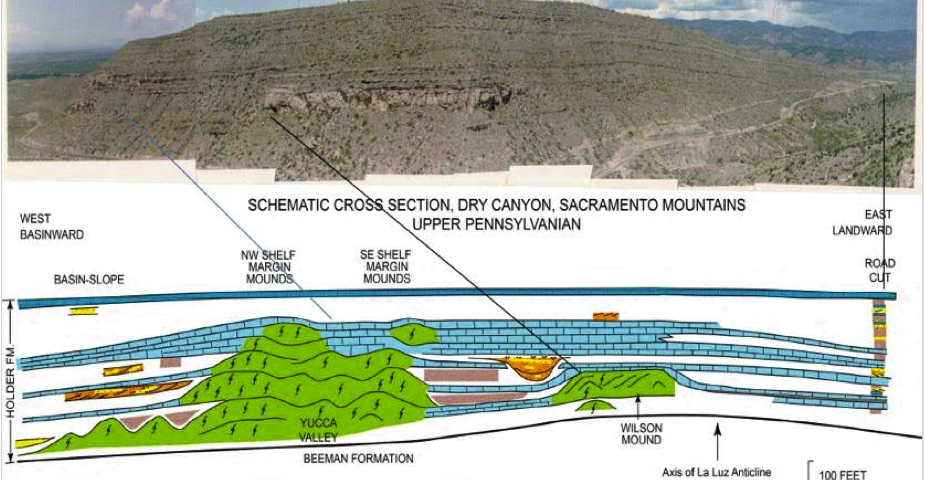A corporate executive might ask, “I don’t care about the miocene, I just care about the kerosene,” said Dr. Art Saller in a lecture about sequence stratigraphy of classic carbonate outcrops. He emphasized that this sort of statement should not impact a geologist. Lackadaisical analysis of an area could result in mislocated, improper, and inefficient drilling, as carbonate deposits are not always immediately apparent.
Saller first focused on the importance of understanding regional geology when making an interpretation of a site’s stratigraphy. He used as an example the Reinecke Field, also known as the Horseshoe Atoll, in Texas.
Saller explained that to the inexperienced, the site seems to be a formation with an on-lap surface quality, meaning that the rocks seem to have been formed in shallow water. In reality, the rock layers are deep water carbonates, sand, and shale. A company would choose not to drill for carbonates there if they did not examine the regional geology more closely.
Saller also discussed how to make accurate conclusions in stratigraphy by analyzing the cycles of transgression and regression movement and accommodation space to discern carbonate systems such as isolated buildups, ramps, and shelves. During a transgression, sea level covers an area farther from shore for a period, and high carbonate deposits in isolated buildups such as mounds can be formed. These mounds are often considered to be unconformities, the result of deposition after some sort of erosion of layers.
 As is the case in the Holder Formation, in Dry Canyon, New Mexico, the Yucca Valley buildup of phylloid mounds corresponds in deposition with the Wilson Mound. Saller explained that the Wilson Mound formed away from the Yucca Valley because of a transgression away from the Yucca Valley. The additional presence of phylloid above the level of the Wilson Mound in the Yucca Valley indicates a subsequent regression.
As is the case in the Holder Formation, in Dry Canyon, New Mexico, the Yucca Valley buildup of phylloid mounds corresponds in deposition with the Wilson Mound. Saller explained that the Wilson Mound formed away from the Yucca Valley because of a transgression away from the Yucca Valley. The additional presence of phylloid above the level of the Wilson Mound in the Yucca Valley indicates a subsequent regression.
In other words, for a period of time, the sea level dropped and the water retreated from the Yucca Valley buildup, moving organisms to survive and deposit carbonates on the Wilson Mound. Eventually the sea level rose and filled the area around the Yucca Valley, allowing organisms to deposit carbonates in the accommodation space created there.
According to Saller, interpretation of a site should also include consideration of evaporitic lagoonal and sabkha facies. These minerals are removed from the site over time, leaving pockets for oil to fill, where layers of non-permeable rock form an updip seal.
As is the case in the Guadalupe Mountains, the top layer of the mountain contains lagoonal mud, which is not good source for carbonate reservoirs. If a geologist did not consider the mud as a potential cap for a carbonate reservoir, that geologist would advise that the area was not ideal for drilling. The reality is the the exact opposite.



'Dr. Art Saller emphasizes the importance of Carbonate Sequence Stratigraphy' has no comments
Be the first to comment this post!